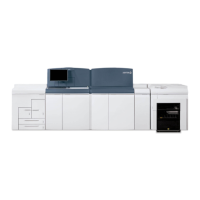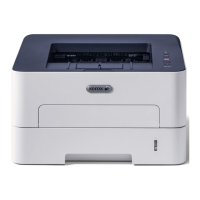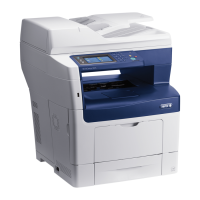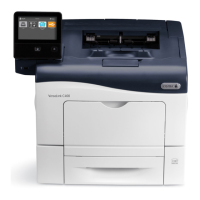Note
The default print resolution is 1200 dpi. 600 dpi printing may be adequate for your job. Try setting
your resolution to 600 dpi to improvethe RIP performance of complex 1200 dpi jobs. 1200 dpi results
in four times the internal image data of a comparable 600 dpi image that has to be transferred
through the system. When the print resolutionis changed from 1200 to 600 dpi, the strokethickening
value may also need to be changed from 1 to 0 to avoid excessive line thickening.
• It is common to embed logos and watermarks in submitted print files. These are typically bitmap
images that, when embedded in a print stream (such as PostScript), can take a long time to process.
Note also that resolution selections, such as 600 dpi vs. 1200 dpi, can have a significant further
impact on processing of these types of embedded images. Consider the design of documents and
impacts to printing speed in such cases. There are methods available, through PostScript for example,
to cache these embedded images, process them once, and retain them as a resource for application
on each page without having to render and scale them for each page. Refer to your PostScript
reference manuals and FreeFlow Print Server reference manuals for information about caching.
• Submission of multiple TIFF images simultaneously is a common application. There are several batch
printing tools available on the market. Most of them require the selection of a print driver for the
target printer through which these images files are submitted. In these cases, the TIFF files are
converted to a Printer Description Language (PDL), such as PostScript, by the batch tool using the
printer driver. Then they are submitted to the printer, which in turn RIPs that PDL and re-renders the
TIFF bitmap images back into bitmaps. This is an inefficient process that can significantly slow the
machine down. Nuveraincludes a native TIFF interpreter that can process TIFF files sent to it directly.
Some of the batch tools on the market support a native TIFF submission capability. It may be referred
to as a bypass mode or something similar. If such a capability is available, the Nuvera's performance
can be significantly improved by taking advantage of that capability.
Note
When printing to a DFA-compliant 3rd party finisher, do not select Bypass Transport as the output
location.
• The PDF Optimization feature should not be used when printing PDFs that were saved in FreeFlow
Print Server using the RIP Save or Scan to File selections. These types of documents will take much
longer to RIP when PDF Optimization is enabled. Before enabling PDF Optimization, it is recommended
that the user run performance tests using representative customer jobs.
Restart procedures
Please see the Restarting the System topic for more information.
Improving print speed and productivity
Please see the Improving Print Speed Performance topic for more information.
18-3Xerox
®
Nuvera
®
User Guide and Training Aid (UGTA)
Problem Solving
